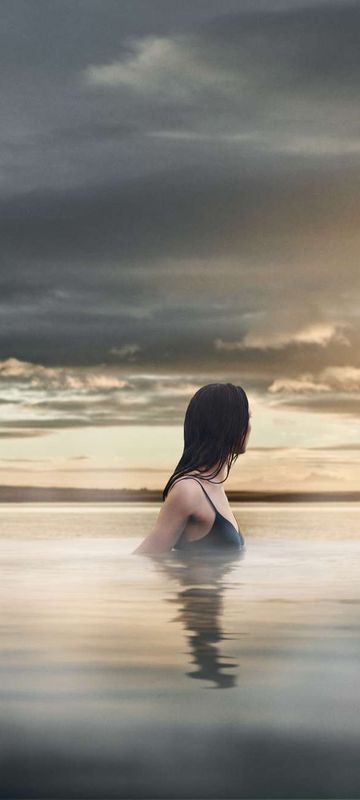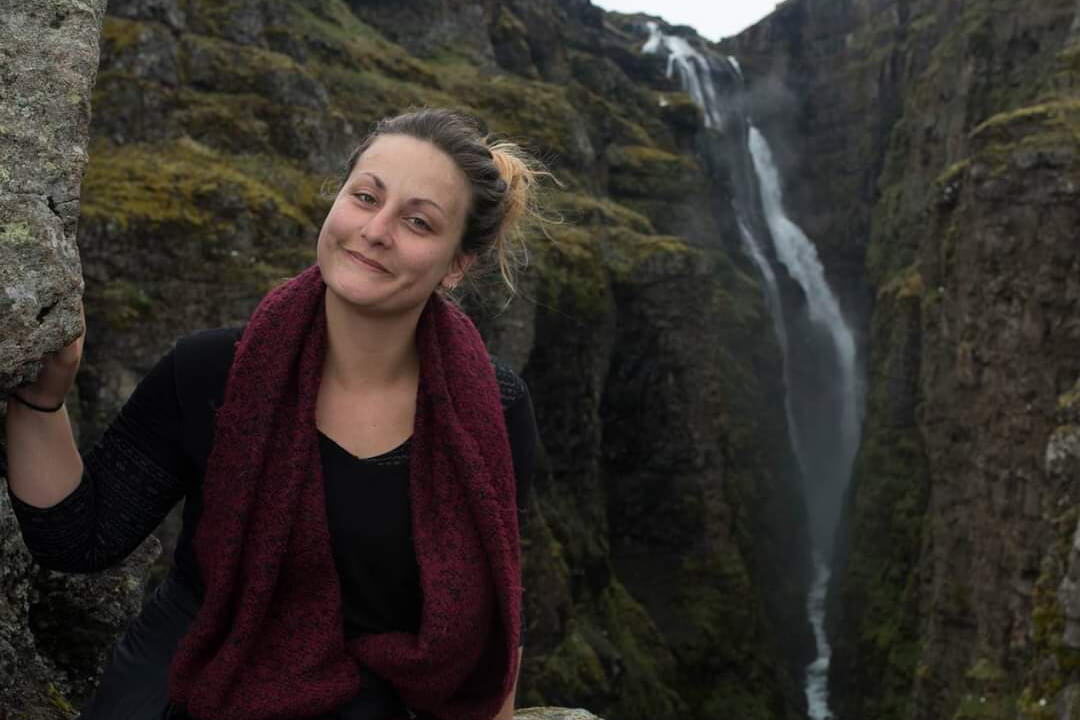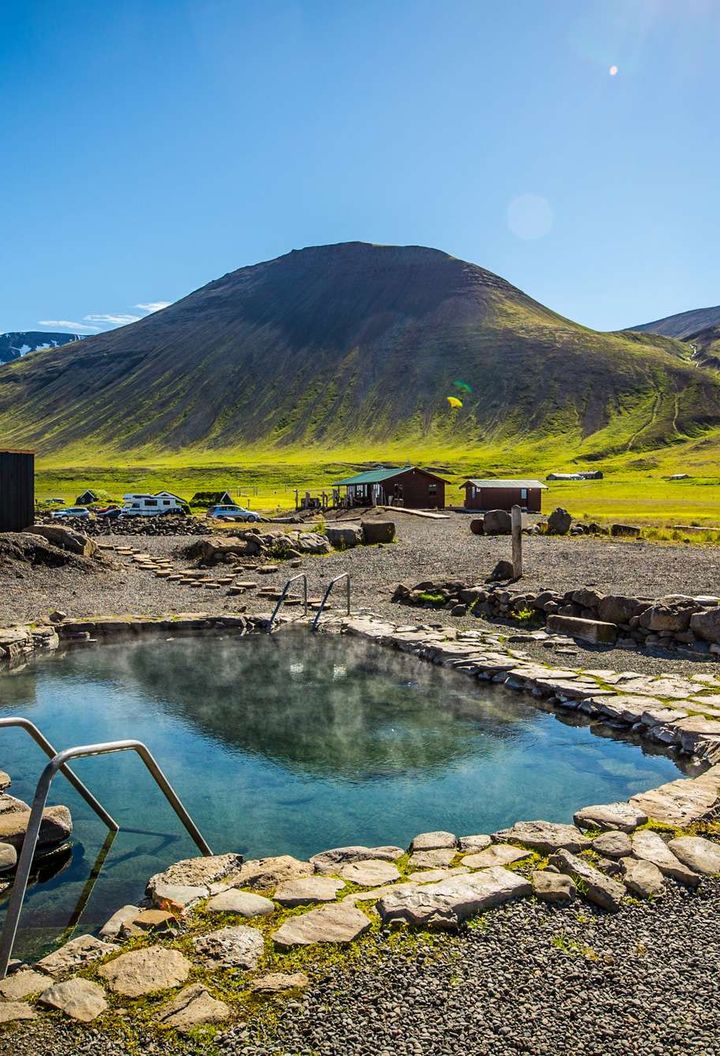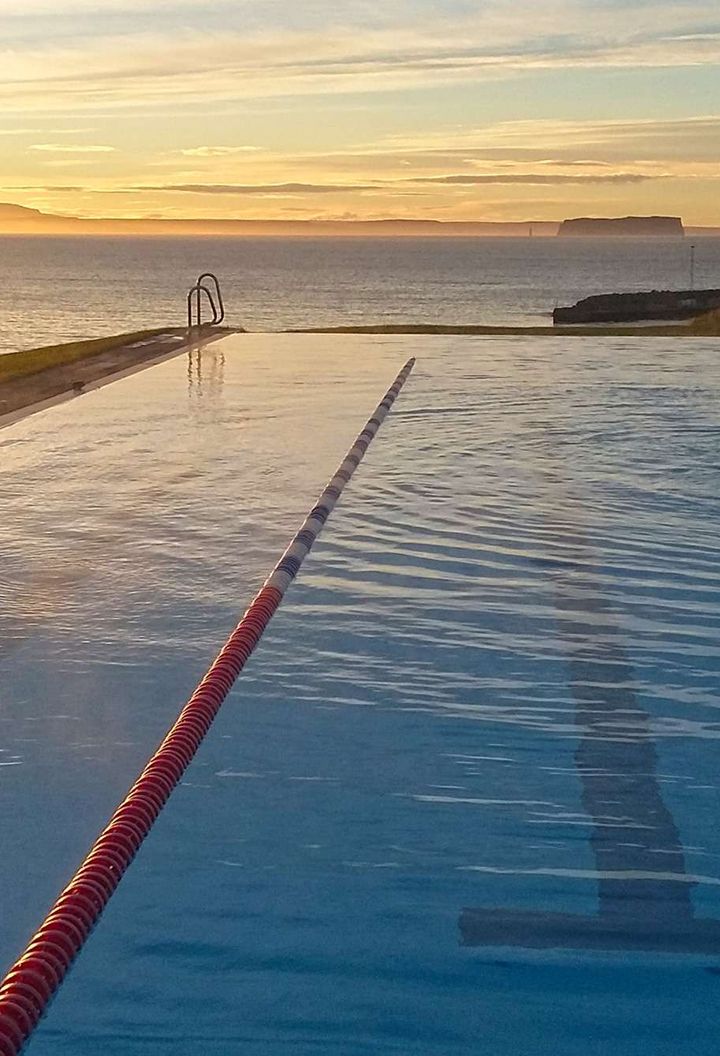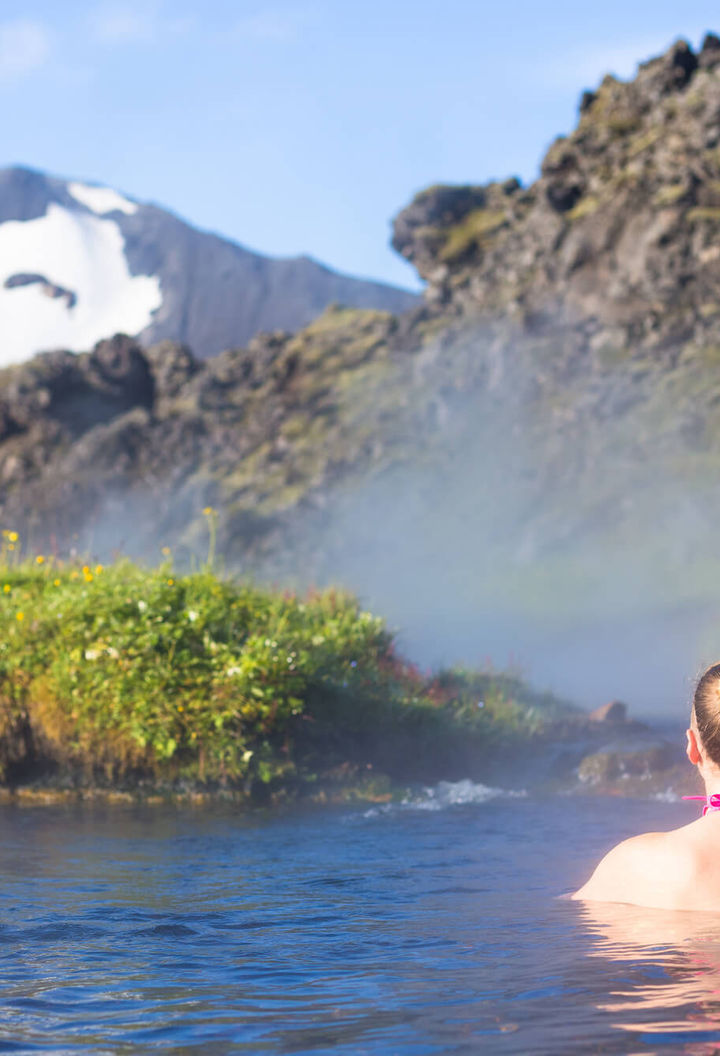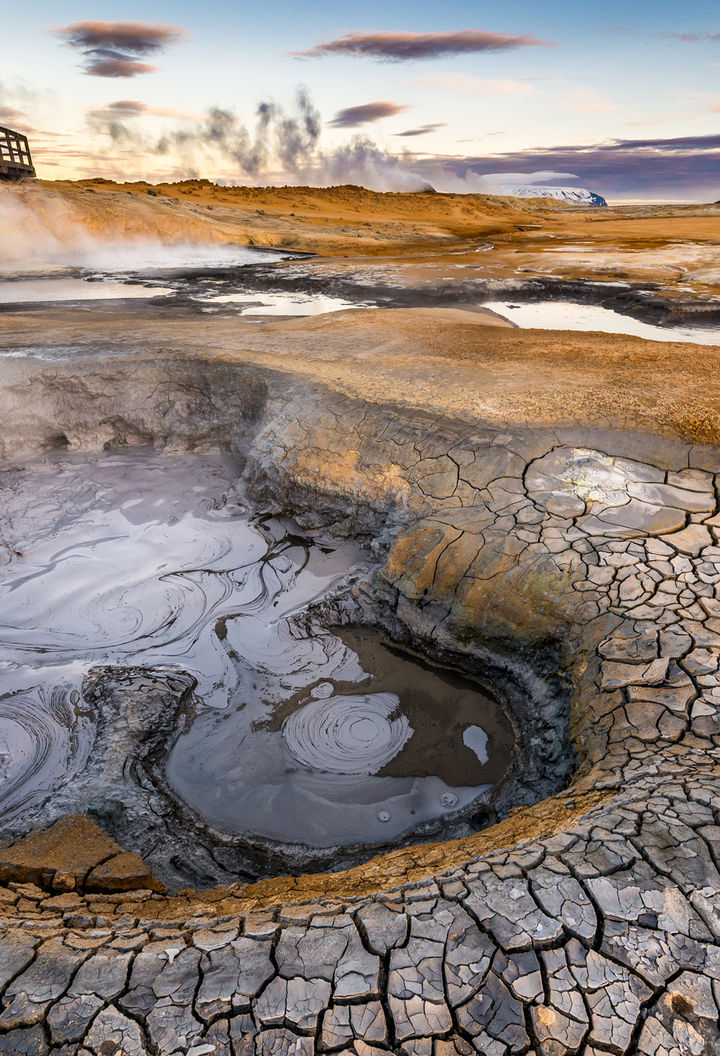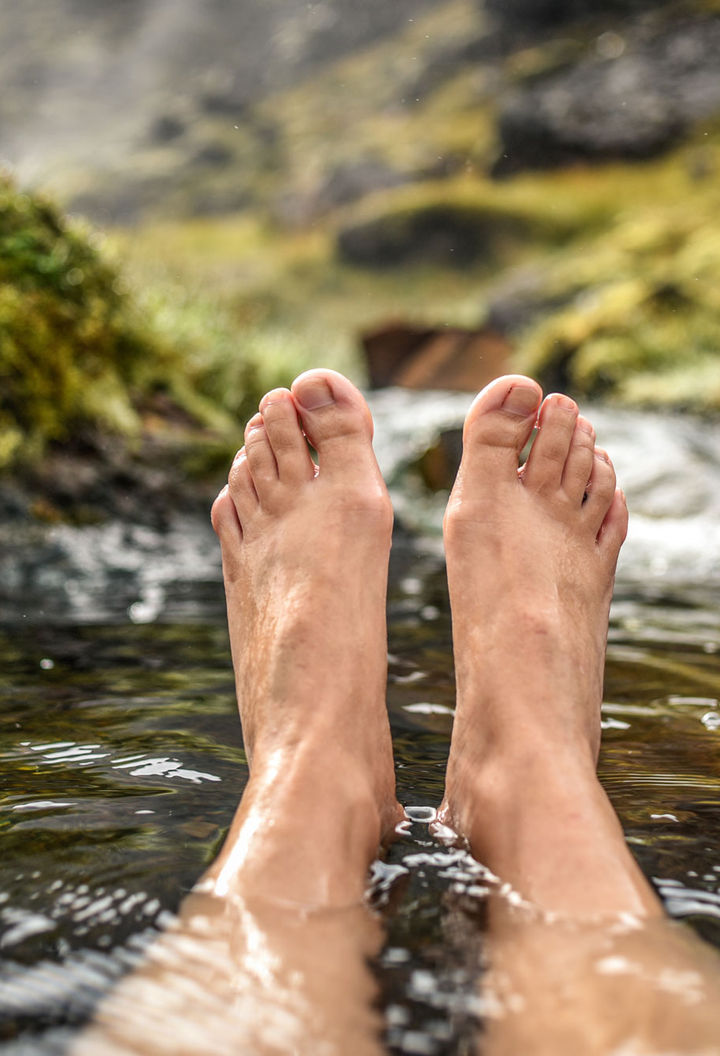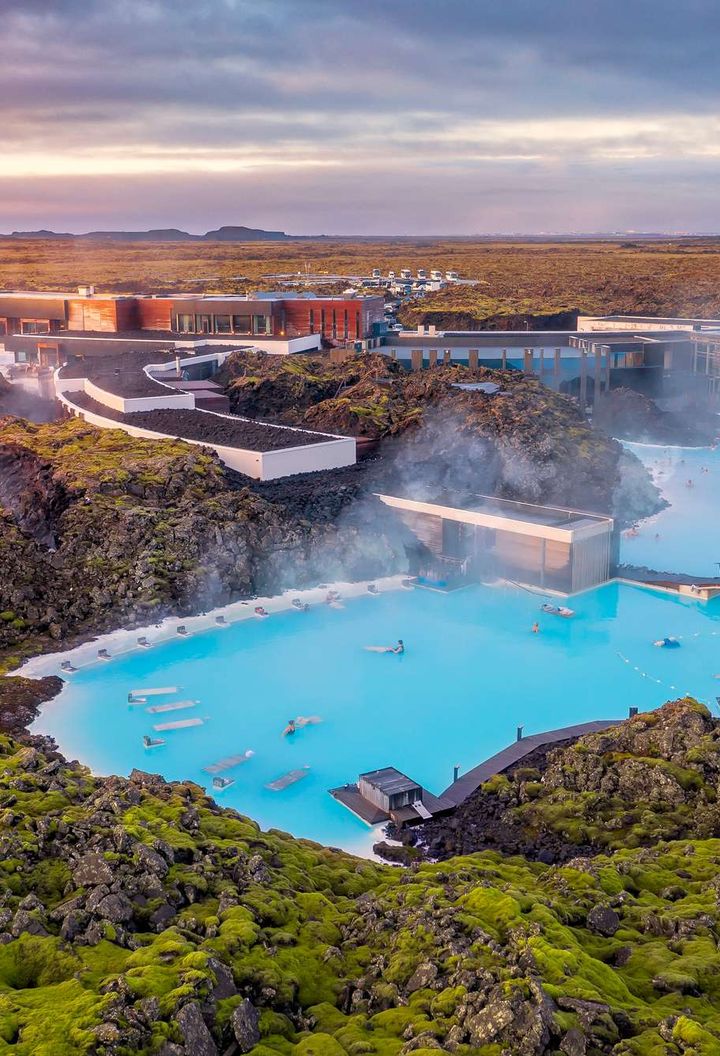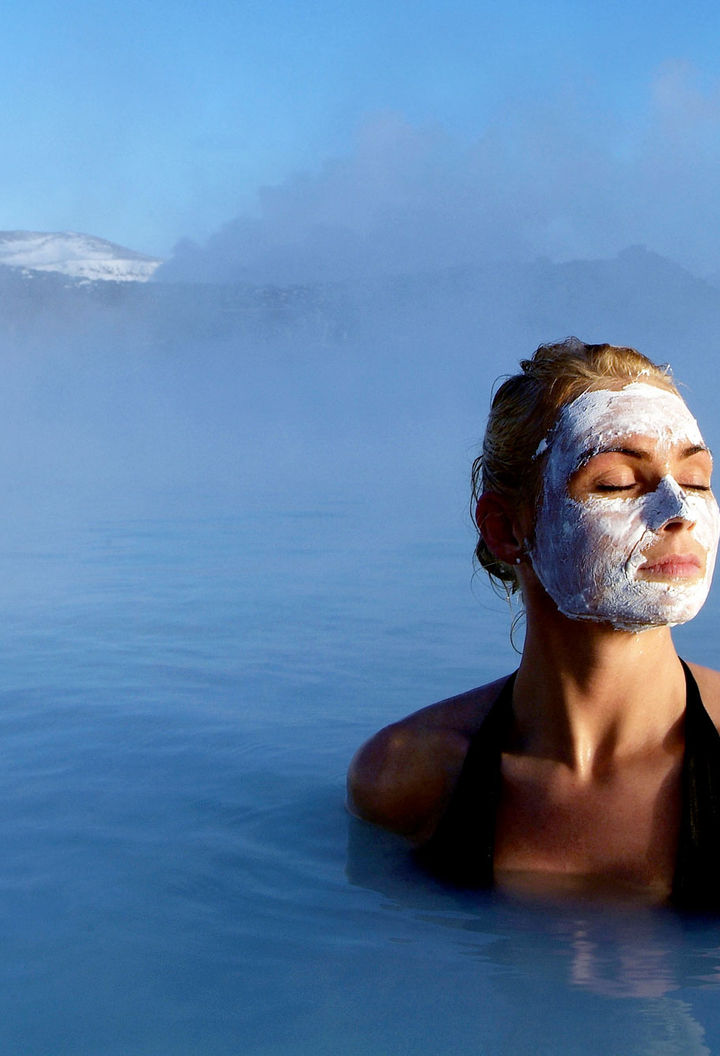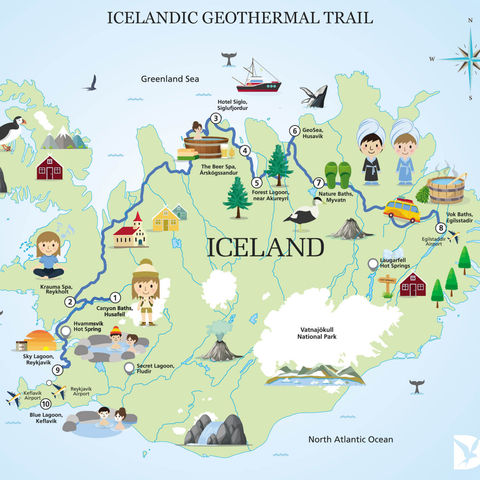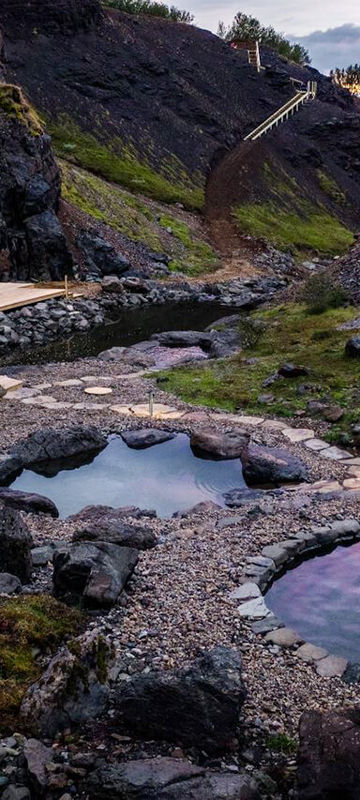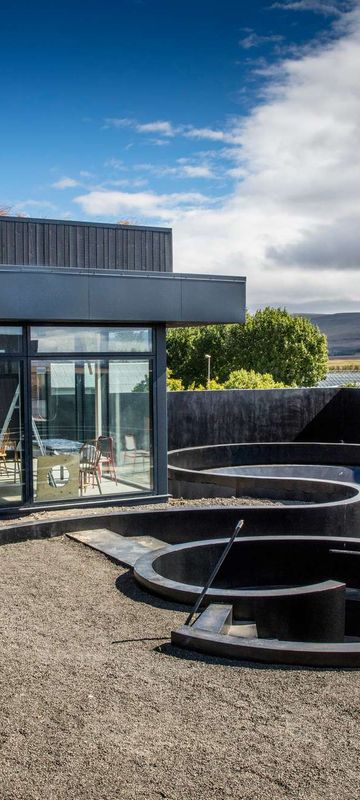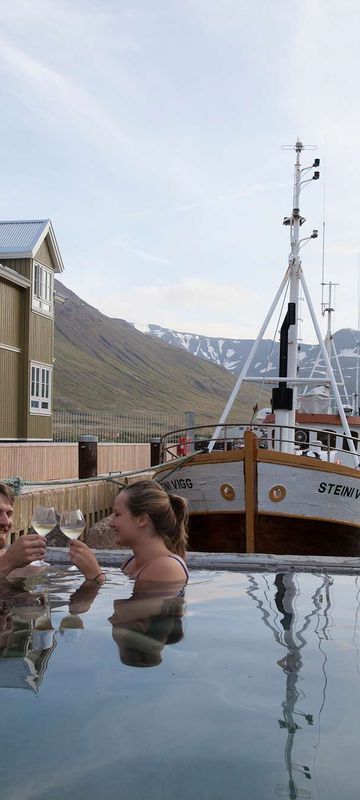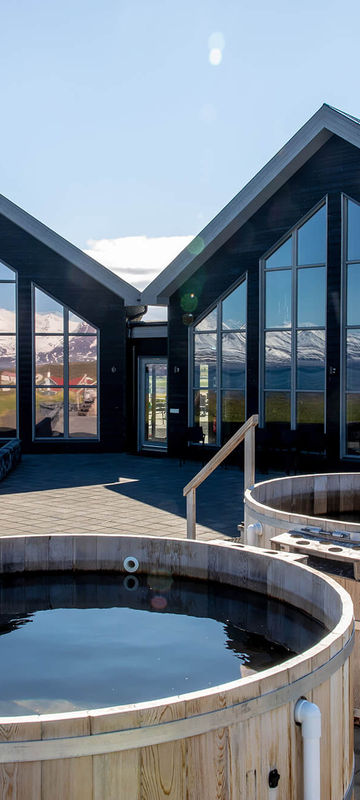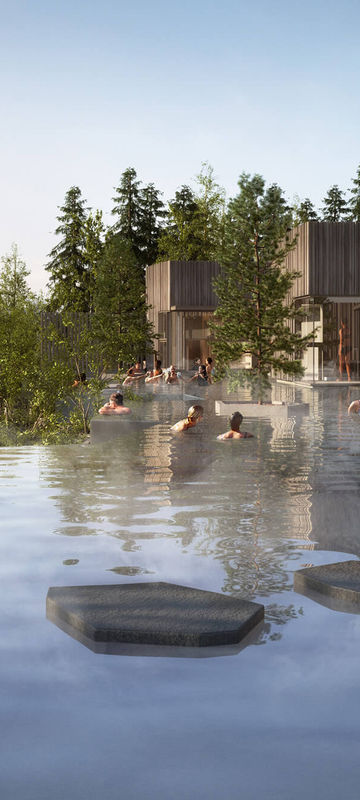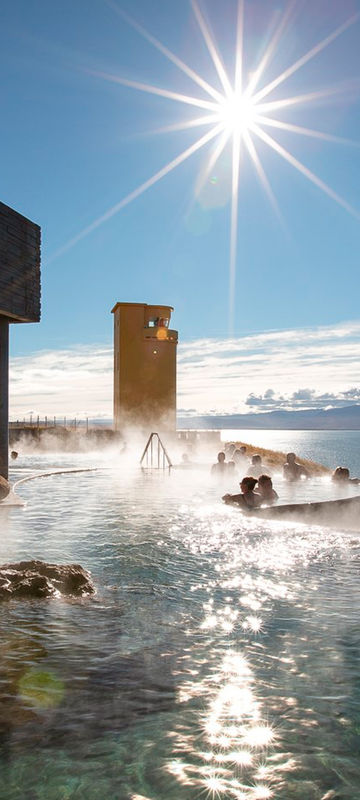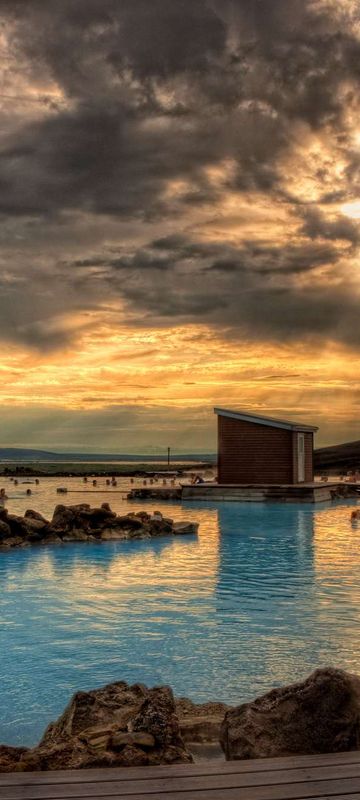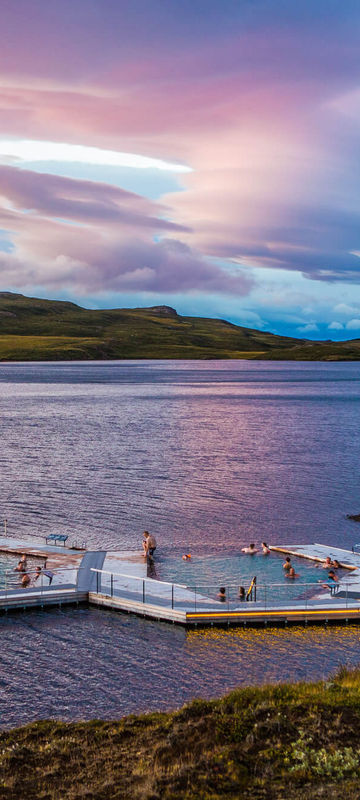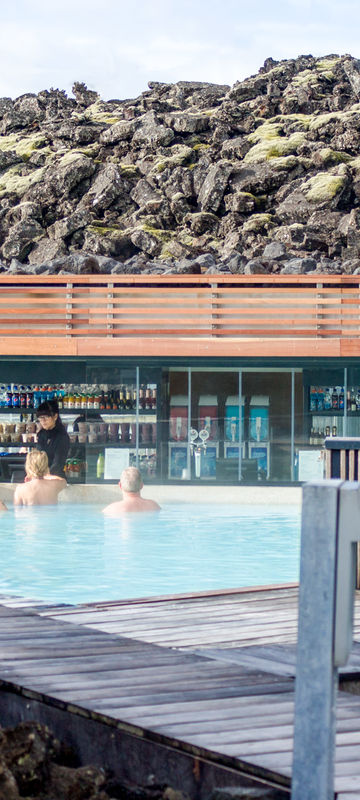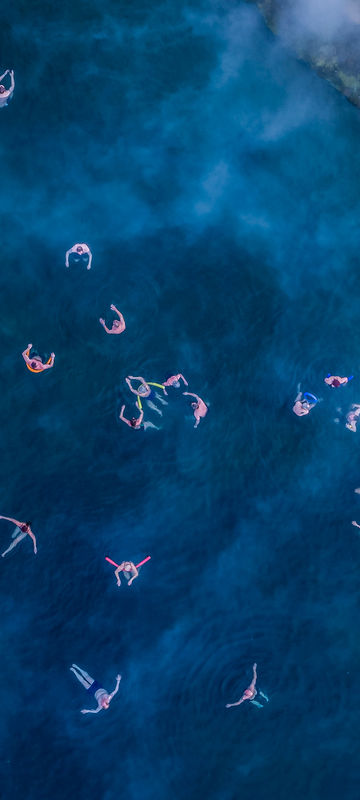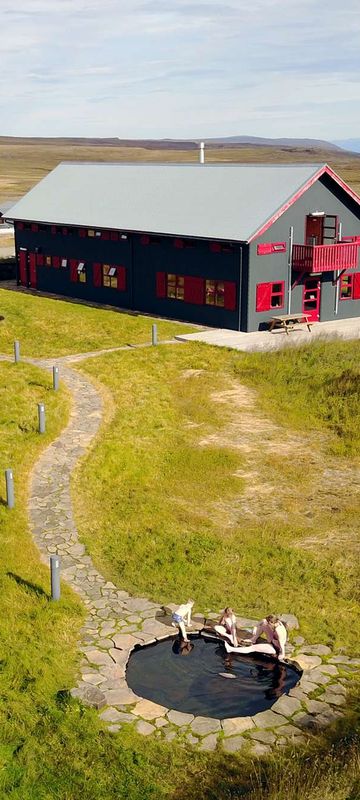Geothermal swimming lagoons in Iceland
Records suggest that Icelanders have been bathing in their abundant, natural supplies of geothermal water since the 10th century. Poet, politician and historian Snorri Sturluson had one of the country’s first-ever hot tubs back in the 1200s. You can still see ‘Snorralaug’ at Reykholt in West Iceland. Nowadays, there are also landscaped lagoons (like the Blue Lagoon and Myvatn Nature Baths), infinity pools (such as the Sky Lagoon and Forest Lagoon), contemporary spas like Krauma, and even floating pools, such as Vok Baths. All of them are fed by geothermal water and are mostly designed for relaxation, wellbeing and gentle poaching, rather than notching up laps in a traditional swimming pool. But if you do want a proper swim, Iceland also has over 120 public swimming pools, located in nearly every town around the country.
























